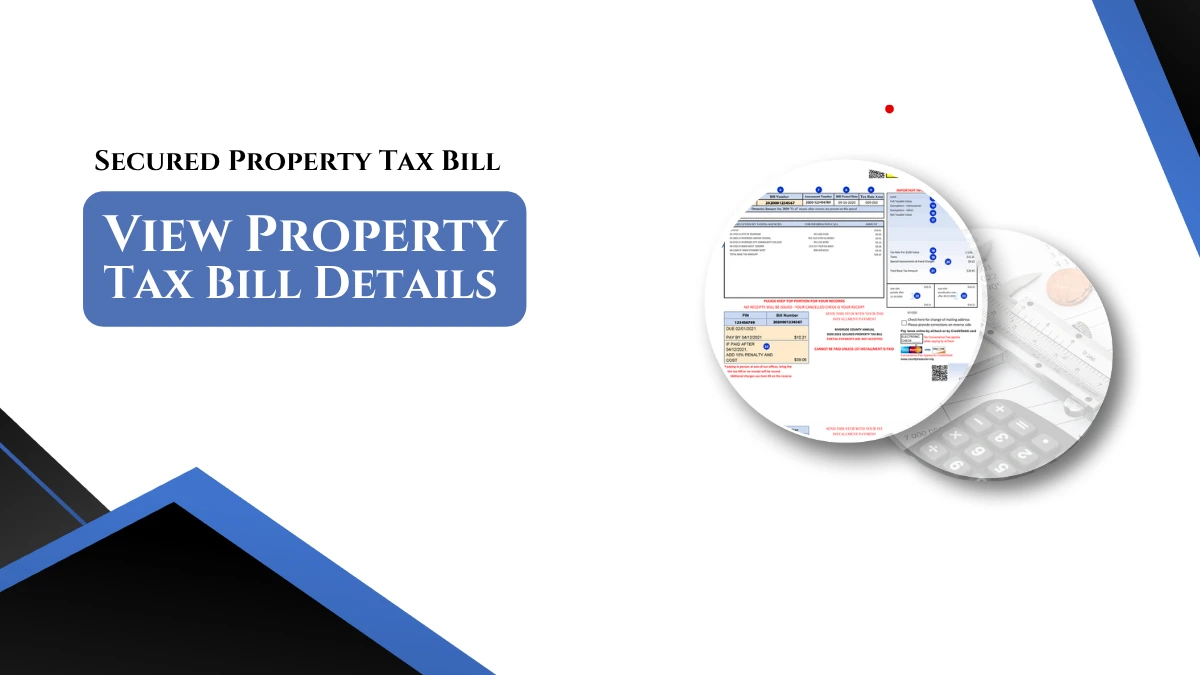Understanding your secured property tax bill is essential for homeowners across California state and the United States.
Proptaxer will explains each section of a typical property tax bill like the Riverside county as a sample, how these components apply in all counties of California and other states, while highlighting the key differences you might encounter.
What is a Secured Property Tax Bill?
A secured property tax bill is an annual statement sent to property owners, reflecting taxes owed on real estate that serves as collateral (or security) for the tax obligation.

If unpaid, the county can place a lien on the property. This system is standard in California and most other U.S. states, though details may vary.
Key Sections of a California Secured Property Tax Bill
1. Bill Type & Property Details
- The bill will specify if it’s an annual, delinquent, or corrected bill.
- Property data includes the Assessor’s Parcel Number (APN), legal description, and situs (physical) address.
2. Owner and Mailing Information
- Lists the owner of record as of January 1 and the mailing address on file.
3. Identification Numbers
- PIN (Primary Identification Number), Bill Number, and Assessment Number are unique identifiers for tracking your property and its tax status.
4. Tax Rate Area
- Indicates the specific tax rate area (TRA) assigned by the county, grouping properties for tax purposes.
5. Important Messages
- Notices about delinquencies, defaulted taxes, or liens are highlighted for immediate attention2.
6. Tax Breakdown
- Shows how your taxes are distributed among various agencies (e.g., city, schools, community colleges), with contact numbers for each.
- Ad valorem taxes are based on your property’s assessed value, while special assessments and fixed charges are added for services or improvements.
7. Assessed Values and Exemptions
- Details the taxable value of land and improvements as of January 1.
- Lists exemptions (like homeowner or veterans’ exemptions) and calculates the net taxable value.
8. Tax Rates and Amounts
- The tax rate combines the statewide 1% (in California) with local voter-approved rates.
- The total base tax amount includes all taxes, special assessments, and fixed charges for the year.
9. Payment Deadlines and Penalties
- First installment: Due November 1, delinquent after December 10 (10% penalty if late).
- Second installment: Due February 1, delinquent after April 10 (10% penalty plus costs if late).
- Payments must be made in full per installment; partial payments are not accepted.
How California Differs from Other States
While the structure of a secured property tax bill is similar in most states, there are notable differences:
| Feature | California (e.g: Riverside County) | Other States (General) |
|---|---|---|
| Assessment Frequency | Annually, with 2% cap (Prop 13) | Annually or on multi-year cycles |
| Tax Rate | 1% base + local assessments | Varies widely; some states higher/lower |
| Installment Payments | Two installments (Nov/Dec & Feb/Apr) | Often single annual payment, some allow installments |
| Exemptions | Homeowner, veterans, senior | Varies—some states offer broader exemptions |
| Penalties | 10% per late installment | Penalties and interest rates vary |
| Special Assessments | Clearly listed, often voter-approved | May be included or billed separately |
Key Differences:
- States like Texas, Florida, and Illinois may have different deadlines, exemption rules, and tax rates.
- Some states allow partial payments or payment plans; California generally does not for secured taxes.
- Exemption amounts and eligibility vary, so check with your local assessor.
Tips for All U.S. Property Owners
- Review your bill carefully: Check for correct ownership, assessed value, and exemptions.
- Know your deadlines: Mark payment due dates to avoid costly penalties.
- Understand special assessments: These fund local improvements and can be significant.
- Contact your assessor or tax collector: For questions about values, exemptions, or payment issues, use the contact information provided on your bill.
A secured property tax bill provides a detailed breakdown of your annual property tax obligation, including assessed values, exemptions, tax rates, and payment schedules.
While the format and rules in California like those shown in the Riverside County sample are typical, always check your local county’s requirements, as states differ in tax rates, exemptions, and payment processes.
By understanding your secured property tax bill, you can ensure timely payments, avoid penalties, and take advantage of all available exemptions on your secured property tax bill.
